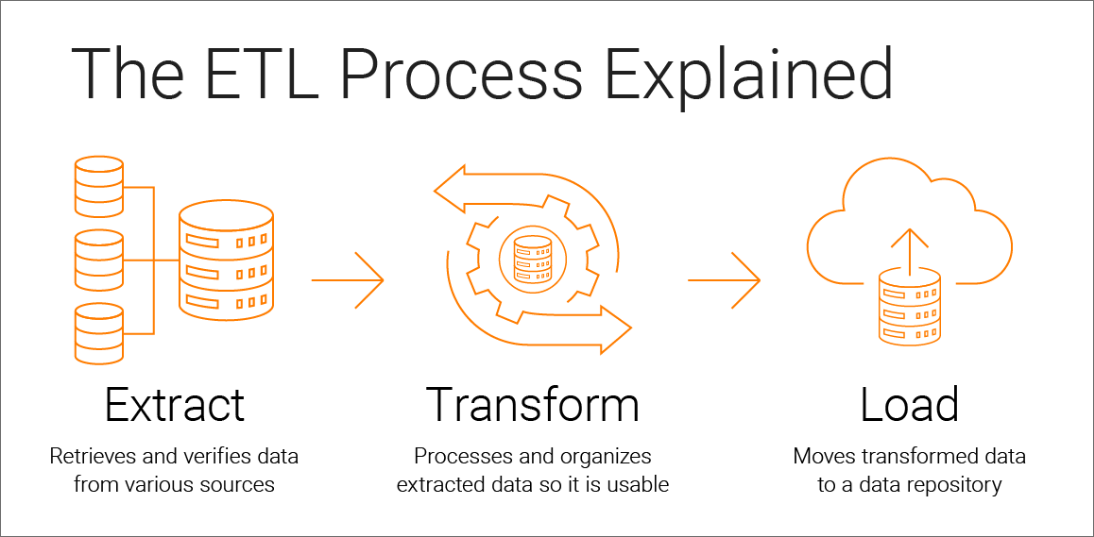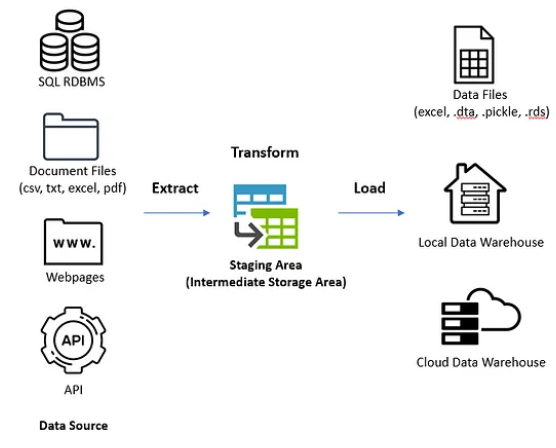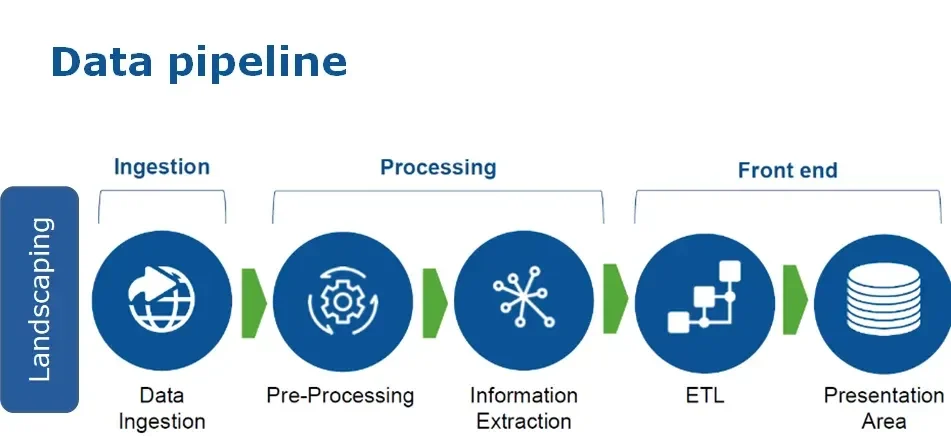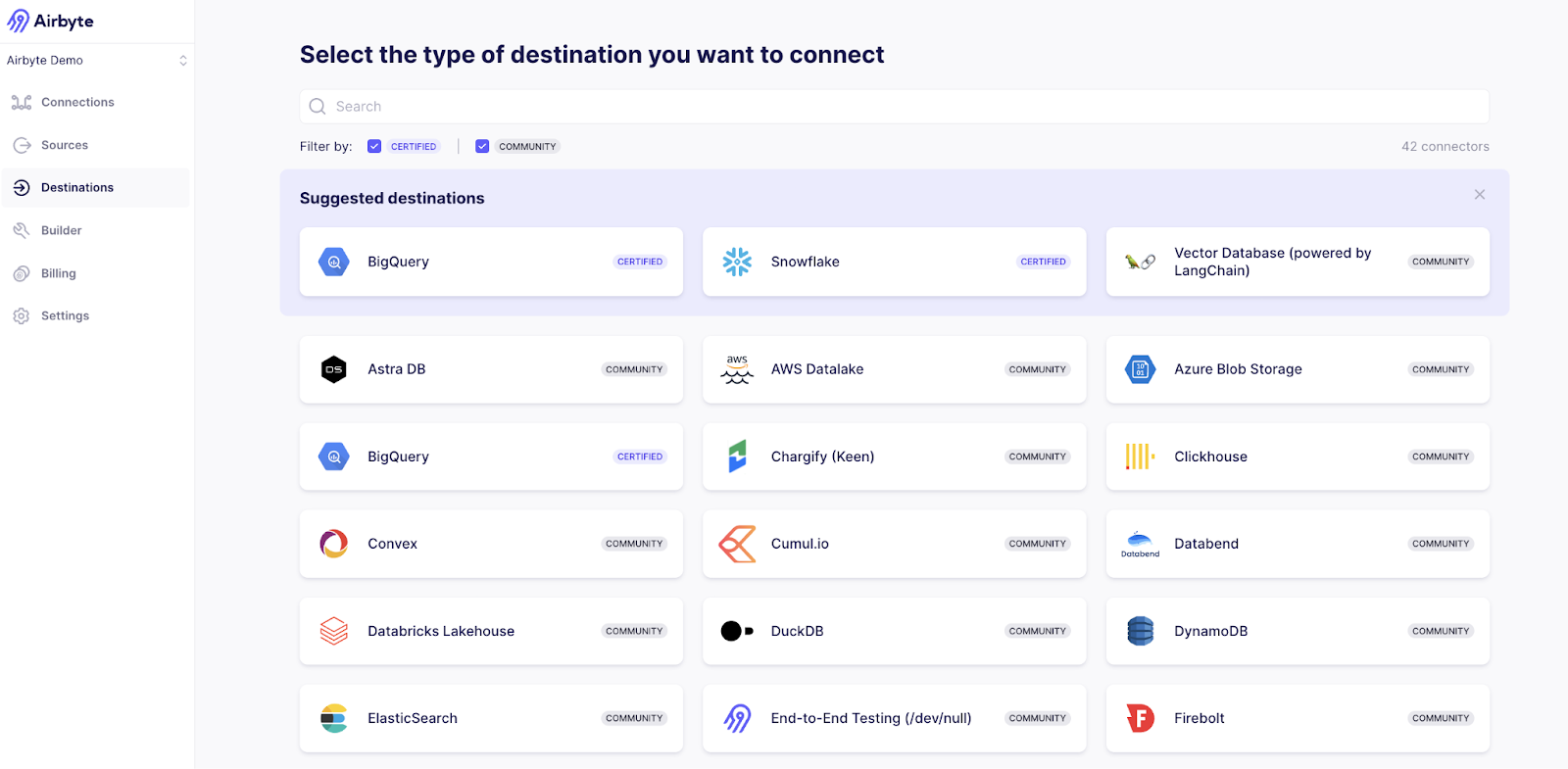What Is an ETL Pipeline: Examples, Tools, and How to Build
Summarize this article with:
✨ AI Generated Summary
ETL (Extract, Transform, Load) pipelines automate data integration by extracting data from multiple sources, transforming it for consistency and quality, and loading it into centralized systems like data warehouses for analysis. Key benefits include improved efficiency, scalability, enhanced data quality, security, and cost-effectiveness, with modern pipelines supporting real-time processing, AI-driven automation, and robust observability.
- ETL pipelines handle batch and streaming data, supporting complex transformations and flexible scheduling.
- AI enhances ETL by automating schema evolution, resource optimization, data quality enforcement, and self-healing.
- Data observability enables proactive monitoring across data freshness, volume, schema, and lineage for faster issue resolution.
- Modern architectures leverage cloud-native, serverless, and containerized designs for scalability and cost optimization.
- Airbyte offers an open-source platform with 600+ connectors, enterprise security, flexible deployment, and integration with modern data stacks to simplify ETL implementation and reduce costs.
ETL stands for Extract, Transform, Load—a series of automated processes offering a structured approach to all your data-integration efforts. It helps you streamline the process by consolidating data from disparate sources and transforming them to gain deeper insights and make informed business decisions.
This article overviews an ETL pipeline, how it works, and its benefits. You will also explore practical use cases of ETL implementations and how you can leverage them to improve data management within your organization.
What Is an ETL Pipeline?
An ETL pipeline is a workflow for preparing data for analysis. It helps you extract data from various sources and transform it into a consistent and usable format. This transformation might involve cleaning the data, removing duplicates, or converting it into a specific structure.
Then, you can load the transformed data into a destination system, such as a data warehouse, where it can be easily accessed for reporting and business intelligence.

ETL pipelines are reusable and can handle different data loads, making them adaptable for various use cases. Depending on your requirements, you can configure them to run on different schedules, such as hourly, daily, weekly, or when triggered by specific events.
You can also use ETL pipelines for various data-integration scenarios, such as one-time batch processes, automated recurring integrations, or streaming data integrations. They are optimal for handling datasets that require complex transformations.
How Does an ETL Pipeline Work?
An ETL pipeline involves three stages during the entire data-transfer process between source and destination—extract, transform, and load. If you are wondering how to build an ETL pipeline, you can use Python or Scala. You can configure the pipelines by writing custom code and specifying details like source connection strings, transformation logic, and destination tables.

Extract
The extraction phase involves connecting to various data sources and pulling information that meets specific criteria. These sources can include databases, APIs, flat files, web services, or streaming platforms. Modern extraction processes support both batch and real-time data ingestion, enabling organizations to handle everything from historical data migrations to continuous data streams.
During extraction, the pipeline establishes secure connections to source systems while implementing proper authentication and authorization protocols. Advanced extraction mechanisms include change data capture techniques that identify only modified records, reducing processing overhead and improving efficiency. Error handling and retry mechanisms ensure robust data collection even when source systems experience temporary unavailability.
Transform
Data is processed during the transformation phase to ensure its values, schema, data type, and structure match its intended utilization and are compatible with the destination. You can apply rigorous data-quality and validation checks to keep your data free from errors, inconsistencies, and missing values and provide a cohesive structure. This ensures reliable and consistent data analysis and reporting.
Aggregators, data masking, expressions, joiners, filters, lookups, ranks, routers, unions, Normalizer, H2R, and R2H are common data-transformation techniques you can perform. Utilizing these techniques allows you to manipulate, filter, format, normalize, and standardize data for advanced analytics, business operations, and visualizations.
These transformations occur in the staging area, protecting your target system from errors and inefficiencies. This also allows for a more modular and reusable ETL process.
Load
Loading is the last stage of the ETL pipeline, where you move your transformed data to the preferred destination. It can be an on-premise or cloud-based target database, data warehouse, data hub, or data lake.
This crucial step involves three key aspects: data mapping, loading techniques, and maintaining data integrity.
- Data mapping defines how each data element from the source system aligns with the corresponding field in the target schema.
- ETL pipelines offer various loading strategies to optimize performance and data volume. A bulk load is the most efficient solution for massive datasets, while an incremental loading method is suitable for frequently updating data. You can also employ the full-load method to ensure complete data synchronization.
- To maintain the quality of the loaded data, you can leverage techniques like data validation and primary-key enforcement.
What Is ETL?
ETL is a process that allows you to extract data from several sources, transform it, and move it to a large, central repository such as a data lake or warehouse. You can organize, unify, and prepare data for storage, data analytics, and machine-learning models by employing extensive business rules. This empowers you to gain a holistic view of your data, streamline workflows, and generate accurate and reliable insights for informed decision-making.
What Are the Benefits of an ETL Pipeline?
ETL pipelines can help your organization deal with scattered information sources and provide a unified data flow. This enables you to perform advanced analytics, generate insights, and make smarter choices. Below are some advantages of an ETL pipeline:

Improved Efficiency
By analyzing data streams and identifying patterns that flag any anomalies or potential risks, you can leverage near-real-time insights and respond to issues quickly. This significantly improves operational efficiency and business processes, allowing you to capitalize on new opportunities and gain a competitive edge.
Scalability
ETL pipelines can easily handle large volumes of high-velocity data from various sources. They are flexible and can manage changing data workloads without affecting performance. Modern cloud-native ETL architectures automatically scale resources based on workload demands, ensuring optimal performance during peak processing periods.
Security and Compliance
You can enforce data-access controls and encryption within your ETL pipelines and protect sensitive data. These pipelines also log data movement and transformations, creating a clear audit trail for regulatory reporting and compliance. Advanced pipelines now include automated PII detection and policy enforcement to maintain regulatory compliance across jurisdictions.
Enhanced Data Quality
ETL pipelines ensure data consistency and reliability by allowing you to remove redundant records, unify data formats, and rectify incorrect data during the transformation stage. This improves the overall quality of your data used for analysis and informed decision-making. Modern quality enforcement includes automated anomaly detection and validation rules that prevent contaminated data from reaching analytical systems.
Cost-Effective
By utilizing ETL pipelines, you can automate repetitive tasks and significantly reduce the computational costs at the staging area. This also reduces the processing power needed for downstream analytics tasks. Cloud-native implementations further optimize costs through pay-per-use resource allocation and automatic scaling that eliminates idle resource expenses.
What Are the Key Characteristics of an ETL Pipeline?
An ETL pipeline is continuous, agile, and elastic. It can respond to changes in data volume or requirements while ensuring your data remains consistent and high-quality. Key characteristics include:
Continuous Data Processing
While ETL pipelines can handle batch processing, they can also constantly process data streams in an automated and uninterrupted manner. This ensures your data stays up-to-date, enables real-time insights, and avoids delays in data availability. Modern streaming ETL architectures support sub-second latency for time-critical business operations.
Easy Setup and Maintenance
Modern ETL pipelines have user-friendly interfaces. You can configure and modify them with minimal effort, significantly reducing pipeline-development time and ongoing maintenance costs. Self-service capabilities enable business users to create integrations without extensive technical expertise.
Flexible Data Manipulation
ETL pipelines allow you to manipulate your data efficiently. You can also easily adjust them to accommodate changes in data formats or schema, ensuring your data remains relevant and useful. Advanced pipelines now include intelligent schema-evolution capabilities that automatically adapt to source-system changes.
Controllable Data Access
ETL pipelines provide granular control over data movement. You can define the source systems, transformation logic, and target destination for the data, ensuring accurate and relevant information gets delivered for analysis. Role-based access controls ensure that sensitive data remains protected throughout the pipeline workflow.
How Can AI-Driven Automation Transform ETL Pipeline Management?
Artificial intelligence has revolutionized ETL pipeline development from reactive maintenance to proactive optimization. Modern AI-driven ETL systems leverage machine-learning algorithms to automate schema mapping, predict resource requirements, and self-correct pipeline failures without human intervention.
Intelligent Schema Evolution
AI algorithms now automatically detect schema modifications in source systems and dynamically remap transformations while preserving data integrity. This eliminates the traditional break-fix cycle that consumed significant engineering resources when database fields changed or new data sources were added.
Predictive Resource Optimization
Advanced ETL platforms employ reinforcement learning to analyze historical workload patterns and automatically adjust resource allocation before bottlenecks occur. These systems predict peak processing times, scale infrastructure proactively, and optimize batch sizing to reduce cloud costs while maintaining performance.
Automated Data Quality Enforcement
AI-powered data-quality engines establish behavioral baselines for incoming data streams and automatically flag anomalies that exceed statistical thresholds. When anomalies are detected, the systems can automatically quarantine suspect data, apply corrective transformations, or trigger human-review workflows based on severity levels.
Self-Healing Pipeline Architecture
Modern ETL pipelines incorporate self-healing capabilities that automatically detect and remediate common failure scenarios. Machine-learning models analyze pipeline telemetry to identify patterns that precede failures and trigger preventive actions. When failures do occur, these systems can automatically retry with adjusted parameters, route data through alternative processing paths, or roll back to previous stable configurations.
What Role Does Data Observability Play in Modern ETL Pipeline Operations?
Data observability represents a paradigm shift from reactive monitoring to proactive pipeline-health management. Unlike traditional system monitoring that focuses on infrastructure metrics, data observability provides comprehensive visibility into data quality, lineage, and operational patterns throughout the ETL process.
Multi-Dimensional Pipeline Monitoring
Effective observability requires continuous measurement across five core dimensions: data freshness, volume consistency, schema stability, distribution patterns, and lineage integrity. Modern observability platforms automatically establish baseline behaviors for each dimension and alert when deviations exceed configurable thresholds.
Automated Anomaly Detection
Machine-learning algorithms analyze historical pipeline patterns to identify anomalies without requiring predefined rules. These systems detect issues like gradual data drift, unexpected volume changes, or processing-latency increases that might indicate upstream problems.
Root-Cause Analysis Automation
Advanced observability platforms provide automated root-cause analysis by correlating data anomalies with pipeline-execution metrics, system-performance indicators, and external dependencies. This dramatically reduces the time required to identify and resolve pipeline issues.
Proactive Compliance Management
Observability frameworks now embed regulatory compliance directly into pipeline operations through automated policy enforcement and audit-trail generation. These systems continuously monitor data movement to ensure encryption, access controls, and retention policies are properly applied.
What Are the Emerging Techniques for Real-Time ETL Processing?
Real-time ETL processing has evolved beyond traditional batch operations to meet the demands of instantaneous decision-making and operational analytics. Modern techniques leverage streaming architectures and event-driven patterns to achieve millisecond-latency data processing across distributed systems.
Change Data Capture Integration
Change Data Capture mechanisms monitor database transaction logs to identify and propagate only modified records to downstream systems. This approach reduces processing overhead while enabling near-real-time synchronization between operational databases and analytical platforms. CDC implementations support complex scenarios including schema evolution, handling deletes, and maintaining referential integrity across distributed data architectures.
Event-Driven Pipeline Architecture
Event-driven ETL systems respond to data changes through message queues and streaming platforms rather than scheduled batch jobs. Apache Kafka and cloud-native streaming services enable pipelines that trigger transformations immediately upon data arrival, supporting use cases like fraud detection, inventory management, and customer personalization that require instant responses.
Stream Processing Frameworks
Unified batch-streaming engines allow organizations to process both historical data and real-time streams using consistent logic and infrastructure. Platforms like Apache Flink and structured streaming capabilities in modern data platforms enable complex transformations, including windowed aggregations, stateful joins, and temporal analytics, while maintaining exactly-once processing guarantees.
Micro-Batch Optimization
Advanced streaming ETL systems optimize performance through intelligent micro-batching that balances latency requirements with processing efficiency. These systems dynamically adjust batch sizes based on data velocity, system load, and downstream capacity to maintain optimal throughput while meeting latency service-level agreements.
How Do Modern ETL Architectures Address Scalability and Cost Optimization?
Contemporary ETL architectures prioritize elastic scaling and cost efficiency through cloud-native designs that automatically adapt to workload demands while optimizing resource utilization across distributed computing environments.
Serverless Computing Integration
Serverless ETL architectures eliminate infrastructure management overhead through event-triggered processing that scales automatically with workload demands. These systems charge only for compute time consumed during data processing, dramatically reducing costs for irregular or bursty workloads while providing unlimited scaling capability for peak processing periods.
Container-Based Orchestration
Kubernetes-native ETL platforms enable precise resource allocation and horizontal scaling through containerized workloads. These architectures support isolated processing environments for different data sources while sharing underlying infrastructure, allowing organizations to optimize costs through resource pooling and automatic scaling based on queue depth and processing requirements.
Zero-ETL Paradigms
Zero-ETL approaches minimize data movement by enabling direct querying across distributed data sources through virtualization and federation technologies. These architectures reduce storage costs, eliminate replication lag, and simplify pipeline maintenance while supporting real-time analytics on operational data without compromising source system performance.
Intelligent Resource Allocation
Modern platforms employ machine learning to analyze historical usage patterns and predict resource requirements for upcoming workloads. These systems automatically provision optimal compute and storage resources while implementing cost controls through spot instance utilization, reserved capacity planning, and automated shutdown of idle resources during low-activity periods.
How Do ETL Pipelines Compare to Data Pipelines?
A data pipeline is a broader concept representing components that make up your organization's data analytics infrastructure. It includes various technologies that allow you to verify, summarize, and find patterns within your data while supporting projects like ML and data visualizations. ETL is one of the processes that you employ within data pipelines to extract, transform, and load data.

How Does Airbyte Help Build ETL Pipelines and Reduce Data Movement Costs?
Airbyte is an open-source data-integration platform that democratizes data movement by providing over 600 pre-built connectors to streamline your data-integration process. Unlike traditional ETL platforms that force organizations to choose between expensive proprietary solutions and complex custom development, Airbyte eliminates vendor lock-in while maintaining enterprise-grade security and governance capabilities.
Airbyte transforms how organizations approach data integration by solving the fundamental problem of effectively managing and integrating data across diverse enterprise environments. The platform's core mission centers on eliminating the traditional trade-offs that force organizations to choose between expensive, inflexible proprietary solutions and complex, resource-intensive custom integrations.

Key Features of Airbyte
- Extensive Connector Library: Access over 600 pre-built connectors covering databases, APIs, files, and SaaS applications with community-driven connector development that rapidly expands integration capabilities.
- Enterprise-Grade Security: End-to-end encryption, role-based access controls, and comprehensive audit logging ensure data security across all deployment environments with SOC 2, GDPR, and HIPAA compliance for regulated industries.
- Flexible Deployment Options: Choose from Airbyte Cloud for fully-managed service with 10-minute setup, Self-Managed Enterprise for complete infrastructure control, or Open Source for maximum customization. Hybrid deployments enable cloud management with on-premises data processing.
- Developer-Friendly Tools: PyAirbyte library enables seamless integration with Python workflows, while the Connector Development Kit accelerates custom-connector creation. API-first architecture supports integration with existing workflows and tools.
- Production-Ready Performance: Handles petabyte-scale data volumes with automated scaling and optimization. Kubernetes support provides high availability and disaster recovery capabilities with real-time monitoring and alerting for pipeline reliability.
- Modern Data Stack Compatibility: Native integration with Snowflake, Databricks, BigQuery, and other cloud data platforms. Support for orchestration tools like Airflow, Prefect, and Dagster with compatibility for transformation tools like dbt.
Airbyte's open-source foundation with enterprise extensions provides a unified platform where flexibility combines with governance and security. The platform processes over 2 petabytes of data daily across customer deployments, supporting organizations moving from legacy ETL platforms to modern cloud-native architectures while maintaining complete control over data sovereignty and security.
Conclusion
ETL pipelines provide a structured approach to data integration that transforms raw data from disparate sources into usable formats for analysis. Whether your goal is business intelligence, marketing analytics, or real-time monitoring, ETL pipelines help you streamline data processes and maintain a competitive edge.
Frequently Asked Questions
What language is used in an ETL Pipeline?
Most ETL tools offer visual interfaces, but you can also build ETL pipelines with general-purpose programming languages such as Python or Java. Modern platforms increasingly support SQL-based transformations and low-code development approaches.
What are ETL and ELT Data Pipelines?
ETL and ELT are two approaches to building data pipelines. In ETL, data is transformed before loading into the target system; in ELT, data is loaded first and transformed inside the destination system.
How does a business implement its ETL pipeline?
Some businesses rely on custom Python scripts written in parallel threads, while others use platforms like Airbyte, modern cloud-native tools, or enterprise solutions. The choice depends on technical requirements, budget, and scalability needs.
Is building an ETL or data pipeline in Node a viable option?
Yes. Node.js can be a viable option, especially for smaller projects or those needing near-real-time performance. However, Python and Java remain more popular choices for enterprise ETL implementations.
How do I test an ETL Pipeline?
Verify data quality at each stage—extract, transform, and load—by comparing source and target data to ensure accuracy and completeness. Modern testing includes automated data validation, schema-drift detection, and performance benchmarking.
What is a low-overhead ETL pipeline?
A low-overhead ETL pipeline minimizes resource usage during processing through efficient tools, optimized code, and by avoiding unnecessary transformations. Cloud-native architectures with automatic scaling help optimize resource utilization and costs.

.webp)
.webp)